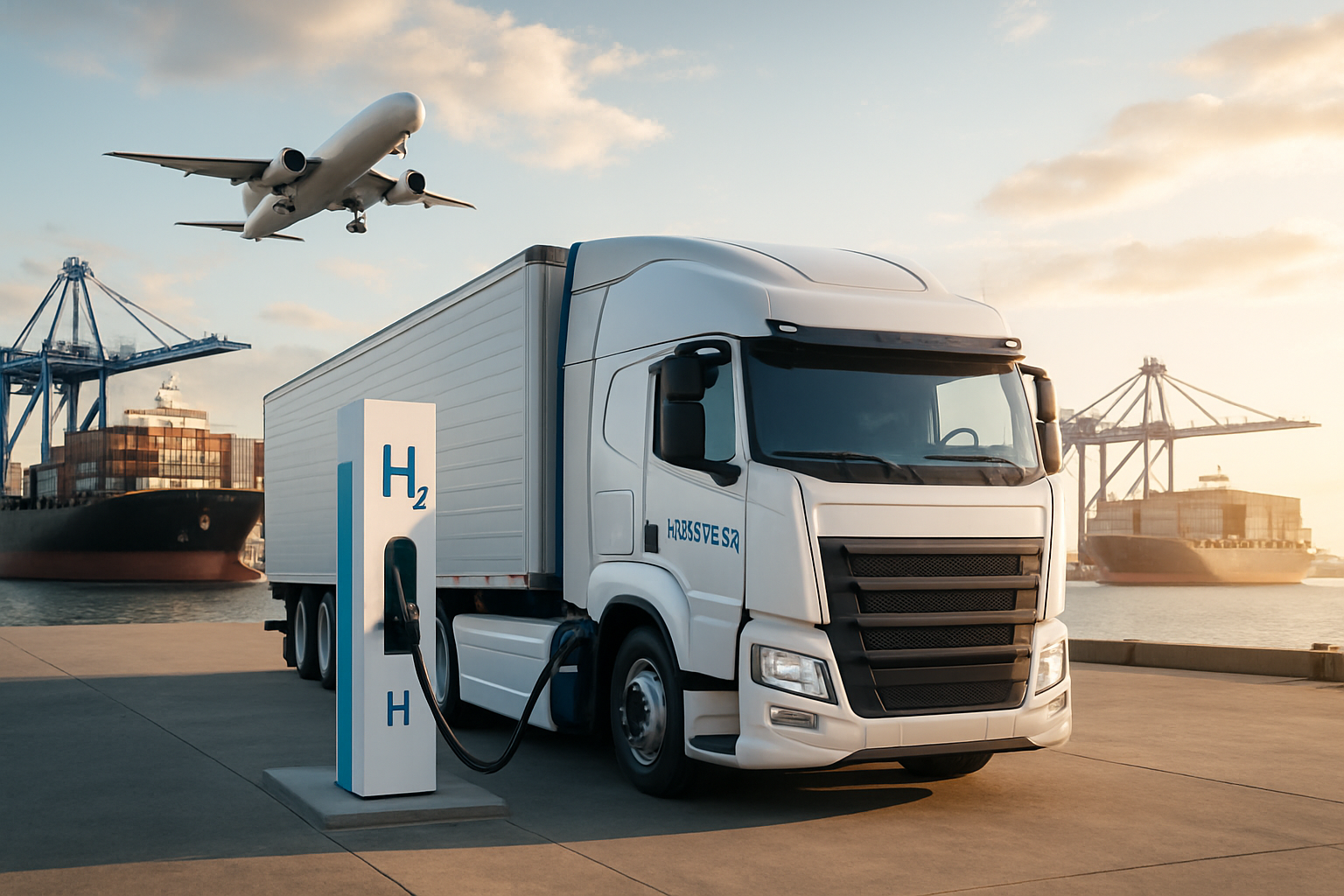Hydrogen Fuel Cells: The Quiet Revolution in Commercial Transportation
Imagine a world where heavy-duty trucks glide silently through city streets, emitting nothing but water vapor. Picture bustling ports where cargo ships dock to refuel with a clean, abundant energy source. This isn't a far-off dream, but a rapidly approaching reality thanks to hydrogen fuel cell technology. As the automotive industry grapples with environmental concerns, hydrogen is emerging as a potent solution for commercial transportation, promising to reshape our roads, seas, and skies.

Transforming Long-Haul Trucking
The trucking industry stands at the forefront of hydrogen adoption. Major manufacturers are investing heavily in fuel cell electric trucks (FCETs) designed for long-haul routes. These vehicles boast ranges comparable to diesel trucks but with zero emissions. The quick refueling time—often under 15 minutes—addresses a critical pain point for fleet operators concerned about downtime.
Revolutionizing Maritime Transport
Hydrogen’s potential extends beyond roads to the high seas. The maritime industry, a significant contributor to global emissions, is exploring hydrogen as a clean alternative to heavy fuel oil. Hydrogen fuel cells are being tested in everything from small ferries to massive container ships. The technology promises to drastically reduce the environmental impact of shipping while maintaining the power and range needed for ocean-crossing voyages.
Aviation’s High-Flying Ambitions
While battery-electric technology struggles with the weight constraints of aviation, hydrogen presents a compelling solution. Several aerospace companies are developing hydrogen-powered aircraft, from small regional planes to concept designs for long-haul passenger jets. The high energy density of hydrogen could potentially enable zero-emission flights across continents, a game-changer for an industry under increasing pressure to reduce its carbon footprint.
Infrastructure: The Key to Widespread Adoption
The success of hydrogen fuel cells in commercial transportation hinges on the development of robust fueling infrastructure. Governments and private companies are investing billions in hydrogen production facilities and fueling stations. Green hydrogen, produced using renewable energy, is becoming increasingly cost-competitive, paving the way for a truly sustainable transportation ecosystem.
Overcoming Technical Challenges
Despite its promise, hydrogen fuel cell technology faces several hurdles. Storage and transportation of hydrogen require specialized equipment due to its low density and high flammability. Engineers are working on advanced storage solutions, including cryogenic tanks and novel materials that can safely contain hydrogen at high pressures. Additionally, improving the efficiency and durability of fuel cells remains a focus of ongoing research.
Economic Considerations
The economics of hydrogen fuel cells are rapidly evolving. While the initial cost of fuel cell vehicles remains higher than conventional alternatives, the total cost of ownership is becoming increasingly competitive. Factors such as lower maintenance requirements, potential fuel cost savings, and government incentives are tipping the scales in favor of hydrogen technology for many commercial applications.
Environmental Impact and Sustainability
The environmental benefits of hydrogen fuel cells extend beyond zero tailpipe emissions. When produced using renewable energy, hydrogen offers a pathway to truly carbon-neutral transportation. This aligns with global efforts to combat climate change and improve air quality in urban areas. However, ensuring sustainable hydrogen production at scale remains a critical challenge that requires ongoing investment and innovation.
The Road Ahead: Integration and Standardization
As hydrogen fuel cell technology matures, industry stakeholders are working towards standardization of components, fueling protocols, and safety regulations. This standardization is crucial for fostering widespread adoption and ensuring interoperability across different vehicle types and manufacturers. Collaborations between automotive, energy, and technology companies are accelerating the development of integrated hydrogen ecosystems.
Conclusion: A Hydrogen-Powered Future
The quiet revolution of hydrogen fuel cells in commercial transportation is gaining momentum. From long-haul trucks to ocean-going vessels and aircraft, hydrogen offers a compelling solution to the environmental challenges facing the transportation sector. While obstacles remain, the rapid pace of technological advancement and growing investment suggest that hydrogen will play a pivotal role in the future of sustainable mobility. As we stand on the cusp of this transformation, the promise of clean, efficient, and powerful hydrogen-powered transportation is closer to reality than ever before.





